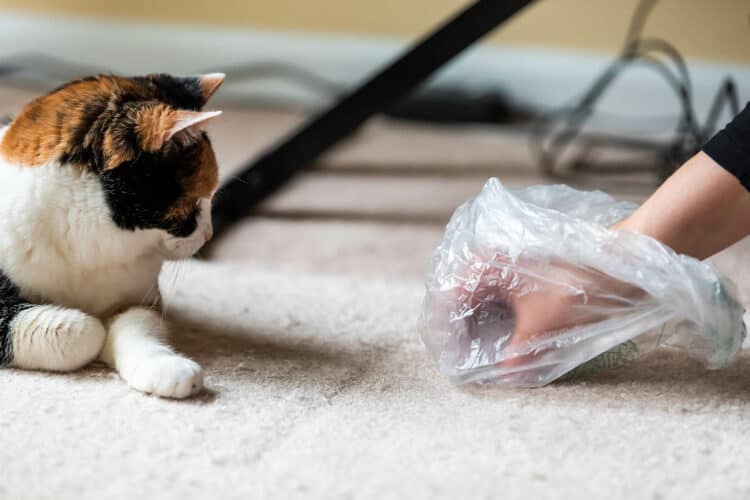Cat ownership has its ups and downs. Although relaxing with a lazy cat in your lap is nice, cats sometimes behave in ways you cannot understand. One problem some cats experience is pooping outside of the litter box. This behavior can come on suddenly, but there is almost always an explanation. Below, we discuss 10 possible reasons your cat isn’t using their litter box.
The 10 Most Likely Reasons Cats Suddenly Poop Outside Their Litter Box
1. They Don’t Like Their New Litter
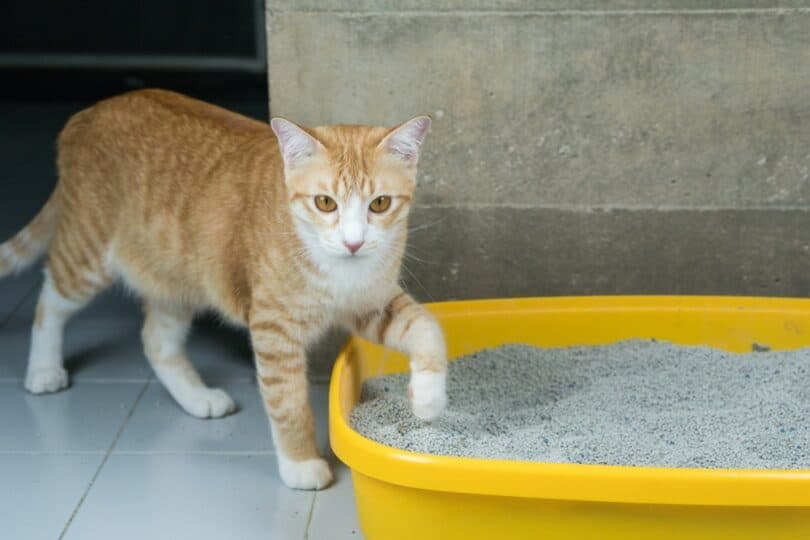
You bought a new brand or type of litter, thinking your kitty wouldn’t notice. Maybe it was on sale, or perhaps you were hoping a scented litter would freshen the place up a bit. But now you have a real mess on your hands.
Some cats are more finicky than others. A picky cat may not like the texture of a different litter or how it smells. Your kitty may have a preferred brand or litter material that you have to stick to.
What to Do
This situation has an easy fix: go back to the original cat litter. If that’s not practical, switch over to the new brand. Start with just a cup or two of the new litter mixed with the existing type. Slowly increase the ratio of new litter over several days or weeks.
2. They Have Bad Aim
If you find poop next to the litter box, your kitty may have thought they were going in the box. There are endless possibilities here. Bad aim can afflict large cats that don’t have enough room to stretch out and do their business. Young kittens might need some practice to succeed, so be patient and have cleaning supplies handy. Also, a piece of poop can stick to a really furry cat’s bottom and fall off when they exit the box. Older felines who have difficulty getting around can miss the mark, too.
What to Do
A bigger litter box is often the solution. Some cats will benefit from an easy-entry box with a lower entry point. Seniors or injured felines may require assistance in the hygiene department, and you may need to wipe their bottoms.
3. They Don’t Want To Share
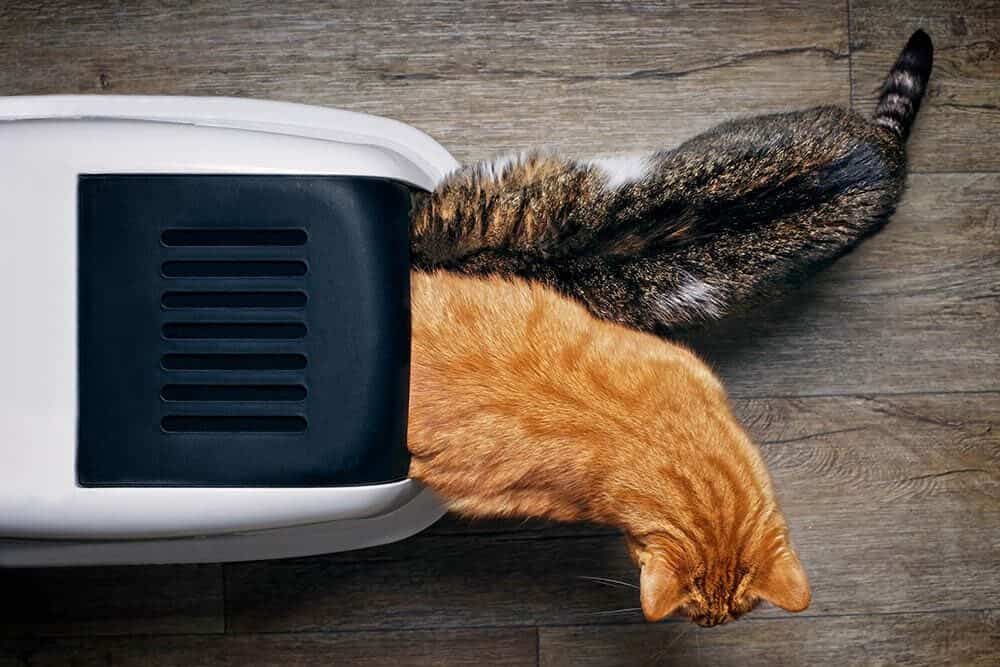
Multi-cat households need more than one litter box. Your cat doesn’t want to step on another kitty’s poo. Can you blame them? A good rule of thumb is to have one litter box for each cat plus one extra, at a minimum. If you have three cats, you’ll need at least four litter boxes. It’s also helpful to spread the boxes around your home, placing at least one on each level. Of course, you can’t stop one cat from using another’s designated potty place. However, the idea is to have enough litter boxes so that each cat uses one regularly, or there is at least a fresh one available to seek out.
What to Do
Most cats do not like to share their potty areas. You can purchase more litter boxes and do your best to keep them clean.
4. The Litter Box Is Not Clean Enough
Cats are fastidious and clean creatures. They’re not going to step foot in a dirty litter box, even if they’re the only ones using it. Ideally, you should clean the box shortly after your cat does their business. Most cat owners can smell when this occurs! If you aren’t home during the day, try to clean the box in the morning and at night. You may need to hire a cat sitter if you’re going to be gone for a day or longer.
What to Do
If you can’t keep up with litter box duty, consider a self-cleaning litter box. The upfront cost is high, but it’s better than a ruined carpet or persistent odors. You can also try multiple litter boxes, even if you only have one cat.
5. There’s an Underlying Health Issue
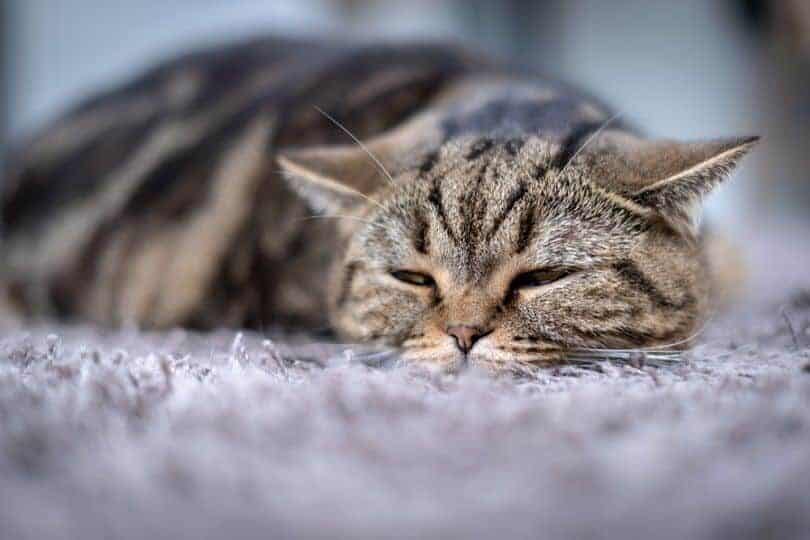
A cat with diarrhea or the uncontrollable urge to defecate may not make it to the litter box in time. Constipation can also make it difficult for a kitty to go in their box, despite its best attempts. Joint or leg pain can also prevent your cat from entering the box. If your kitty has a sudden change in bowel habits, take them to the veterinarian before you attempt any behavioral changes like adding another litter box.
What to Do
Take your cat to the veterinarian for an exam. You’ll want to rule out any health conditions or illnesses.
6. They Don’t Have Privacy
Some cats aren’t shy about doing their business. They will go wherever they need to, yet others want privacy when using their litter box. Try moving the box to a quieter location to make it more appealing to your cat. Many pet parents keep the box in the bathroom, but cat boxes can be tucked away discreetly in the corner of any room. You can even hide a cat box inside a decorative side table. Only you and your kitty will know it’s there!
What to Do
Move the litter box to a room with less traffic. Some cats need a quiet area to go to the bathroom.
7. You Switched Cat Food Brands Too Quickly
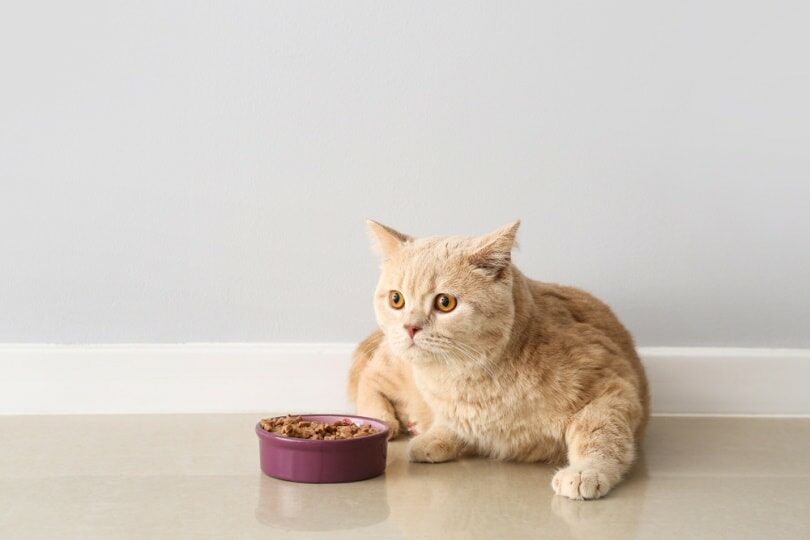
Kitties often have sensitive stomachs. It’s best to stick to one brand of food. Any sudden changes in your cat’s diet can bring on diarrhea or other bowel issues. If you need to switch food, do so slowly. Start by mixing a small amount of the new food with the current food. Then gradually increase the ratio over time. Contact your veterinarian immediately if your cat refuses to eat, drink, or stop pooping altogether.
What to Do
Consult with your veterinarian or a registered veterinary dietitian if you suspect your cat has a food intolerance or allergy. Cats can be slow to accept a new diet. Slowly introduce a new food over two weeks.
8. They’re Stressed Out
Any changes in the household can upset your kitty. Everything from a new baby to a change in your work hours can throw your cat’s mood off. However, that doesn’t mean they’re pooping outside the litter box out of spite or to get back at you. This behavior is a physical manifestation of stress. Keep your kitty’s environment and routine as similar as possible. Allow some time for adjustment when the cat’s environment changes.
What to Do
A stressed-out cat may benefit from a Feliway Calming Diffuser. This product reduces anxiety by releasing a pheromone like mother cats produce after birth. Clean up any litter box misses with an enzyme cleaner formulated for pet poop. These cleaners remove the odor and don’t just mask the smell with an artificial scent.
9. The Litter Box Is a New Concept

An indoor/outdoor cat that can no longer go outside to use the bathroom may need time to warm up to a litter box. The cat may prefer a larger open box that mimics the freedom and room it had outdoors. The same holds true for feral cats that are now pets. Give them time to adjust to using a box and develop new habits. On the other hand, kittens will often take to a litter box immediately.
What to Do
Help your cat adjust to pooping inside by offering a larger, uncovered litter box. Make sure the litter box is in a quiet but well-lit location. Some cats don’t like having their litter box in a corner, as they naturally don’t want to feel trapped by predators.
10. Wrong Amount of Litter
The right amount of litter for most boxes is a depth of 2 inches. Less than that, and it won’t be enough to satisfy your cat’s instinct to scratch and cover up their feces. When the litter is too deep, the cat may feel like it’s in a pit of quicksand! Remember that 2 inches are a good starting point, but you may need to make adjustments for tiny kittens or larger cats.
What to Do
Don’t overfill or underfill your cat’s box. Make adjustments for your cat’s size, age, and height.
Cat Litter Box Tips: Commonly Asked Questions
Litter box issues can leave cat owners scrambling for solutions. Here are answers to some of the most commonly asked questions about litter boxes.
Which Type of Cat Litter Is Best?

The “best” cat litter is the one that you and your cat can agree on! It wasn’t that long ago that clay litter was your only option. Today, cat litter is made of silica gel, pine, corn, and recycled paper. All of these materials have pros and cons regarding weight, price, and sustainability. Many cats will tolerate unscented clay litter just fine.
Are Covered Cat Litter Boxes Better?
A litter box with a cover is more discreet and prevents odors from wafting throughout the house. Some cats will only go in an open litter box. Larger cats can have difficulty maneuvering in and out of a covered container. A covered litter box is “better” only if your cat uses it.
What Room Should I Put My Cat’s Litter Box In?
The best location for a litter box is a quiet room, away from your cat’s food and water. Many people place the cat box in the bathroom, but a laundry room works well, too. If your home is tight on space, you can hide your cat’s litter box inside an end table.
Final Thoughts
Cats can defecate outside of their litter box for many reasons. Be patient with young kittens, as this is a skill they need to develop. Older cats can have difficulty stepping in and out of a raised doorway. Common troubleshooting tips include having multiple litter boxes throughout the house, keeping the box clean, not changing the brand or material of litter, and being mindful of dietary changes. Don’t hesitate to call your veterinarian if your cat’s bathroom habits suddenly change or you can’t problem-solve on your own.
Featured Image Credit: Kristi Blokhin, Shutterstock
